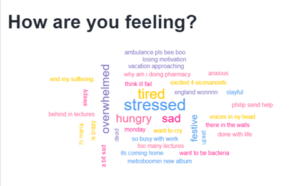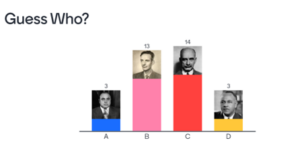This blog post follows part 1 of our case studies on using Mentimeter to promote engagement and interactivity in learning and teaching. Read on for two additional case studies that demonstrate the way in which Mentimeter can be used for a variety of purposes at the University of Bath.
For support and advice about using Mentimeter, see more guidance on the hub here: Mentimeter Guidance on Learning and Teaching Hub, or contact the Technology Enhanced Learning team: tel@bath.ac.uk
Case Study Two: Mentimeter in lectures
The case study below was written by Gwen Scott, a Lecturer in Department of Life Sciences about her experience of using Mentimeter for teaching and learning.
Background context
I am a Teaching Lecturer in the Department of Life Sciences. I am part of the Pharmacology teaching team and have used Mentimeter in nearly all my semester one lectures. I have lectured to undergraduate Pharmacy students in first, second and third year as well as first year undergraduate Natural Sciences and Pharmacology students. The cohorts range in size from 65 to 220 students.
Approach
I used Mentimeter to carry out two different types of activity. The first activity involved an open-ended question to the students at the beginning of the lecture such as “How are you feeling?”, “What are you doing this weekend?”, or “What did you have for breakfast?” The students can write a response which appears as a word cloud. The activity is carried out while I wait for all the students to arrive.

I also use Mentimeter to promote inclusion and diversity in my lectures. I ask the students a “Guess Who?” question related to the lecture content. This provides the opportunity to highlight the work of scientists from different genders and ethnic backgrounds.

Purpose
I use Mentimeter for several different purposes:
- To help engage with the students and make them feel that the staff value their opinions.
- To provide a break in the lecture to allow the students to refocus.
- To provide an opportunity to add inclusive and diverse content to the lecture.
- As an unofficial register of student numbers attending the lecture.
Outcomes
Hopefully the use of Mentimeter to provide a break in the lecture will improve the students' learning experience and promotes EDI (Equality, Diversity and Inclusion).
One pro of using Mentimeter is that you can get a better understanding of how the students are feeling. One con of using Mentimeter is the lack of engagement from some of the students; however, this would also be the case with other tools.
Recommendations
I looked up online resources from YouTube to help set up my Mentimeter activities. Mentimeter also provide a variety of guides on YouTube.
------------------
Case Study Three: Mentimeter for Anti-Racism Training
The case study below was written by Nyika Suttie, a Training Officer in the Student Policy & Safeguarding team.
Background context
As part of the Be the Change anti-racism training, the Student Support and Safeguarding team delivered sessions to up to 50 students at a time.
Purpose
I used Mentimeter to design my training offer as it allows for audience interaction, quizzes and feedback all in one application. Talking about racism, controversy with civility, or consent can be difficult to do out loud. Using Mentimeter allows for anonymised comments, and thus a richer learning experience.
Outcomes
Students have enjoyed Mentimeter question types such as “This or that?”. This has been used in the Controversy with Civility training to measure opinions on trivial issues (for example, jam and cream on a scone), up to more serious issues which are used to practice debating and civil disagreeing skills. This has provided many talking points. Another benefit is that it is an inclusive training method, as text appears on phone screens, and typing rather than putting your hand up is a more inclusive way to hear neurodivergent or anxious people’s views.
Challenges include having too many typing slides can mean less conversation, but a good facilitator should use content from the board to spark discussion. The presentation design is quite limited and you can’t be as creative as you can be with PowerPoint.
Recommendations
My advice would be to just give it a go. It’s easy to use, most students are familiar with it, and the breadth of features mean that you don’t have to switch between different applications and programs. The best way to learn is to play about with it.
Further reading
Mayhew, E., Davies, M., Millmore, A., Thompson, L., & Pena Bizama, A. (2020). The impact of audience response platform mentimeter on the student and staff learning experience. Research in Learning Technology, 28(0). https://doi.org/10.25304/rlt.v28.2397
Mohin, M., Kunzwa, L., & Patel, S. (2022). Using mentimeter to enhance learning and teaching in a large class. International Journal of Educational Policy Research and Review, 9(2), 48–57. https://doi.org/10.15739/ijeprr.22.005
Emma Mayhew (2019) No Longer a Silent Partner: How Mentimeter Can Enhance Teaching and Learning Within Political Science, Journal of Political Science Education, 15:4, 546-551, DOI: 10.1080/15512169.2018.1538882
Shane Donohue (2014) Supporting active learning in an undergraduate geotechnical engineering course using group-based audience response systems quizzes, European Journal of Engineering Education, 39:1, 45-54, DOI: 10.1080/03043797.2013.833169
Respond

